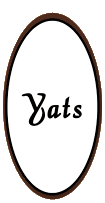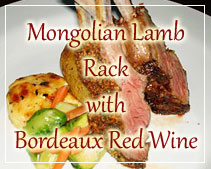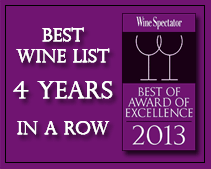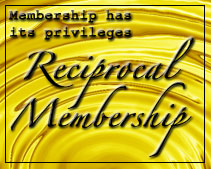Shooting range
June 19, 2011
A shooting range or firing range is a specialized facility designed for firearms practice. Each facility is typically overseen by one or more supervisory personnel, called variously a range master or “RSO – Range Safety Officer” in the United States or a range conducting officer or “RCO” in the UK. These supervisory personnel are responsible for ensuring that all gun safety rules are followed at all times.
Shooting ranges can be indoor or outdoor and possibly restricted to certain types of firearms, e.g. handguns only or rifles, or they can specialize in certain shooting sports such Skeet shooting or 10 m Air Pistol/Rifle.
Specific locales
This article discusses Shooting Ranges in a general sense. For more specific discussion of shooting ranges in specific locales, see:
Shooting ranges in Switzerland
Shooting ranges in the United Kingdom
Shooting ranges in the United States
Likewise, in countries with gun laws heavily restricting the ownership and use of actual firearms, Airsoft guns often are used instead for “shooting range” practice. By their nature, “shooting ranges” for Airsoft competitions may be located nearly everywhere, even in-doors, with no significant restrictions other than the wearing of protective face masks. This article, and the articles for specific locales, do not address “shooting ranges” intended for Airsoft guns.
Type
In urban areas, most shooting ranges will be at indoor facilities. Similarly, in less-populated areas, shooting ranges are often at outdoor facilities.
]Indoor
Indoor pistol shooting range.
Stationary target practice
Indoor ranges usually have a back wall with a sloped earthen berm or bank, with reinforced baffles additionally situated along the roof and side walls. Ranges with proper ventilation pull smoke and lead particles away from the shooting line and discharge them from the building to reduce potential lead poisoning.[1] When ranges lack proper ventilation, employees and users are exposed to lead dust from bullets or cartridge primers. It can be inhaled or can settle on skin or clothing.[2] Additionally, discharge of firearms in indoor ranges can produce noise levels of over 140 dB sound pressure level.[3] To combat this, it is commonly recommended to “double up” ear protection by using both earplugs and over the head earmuffs. To protect range bystanders from sound exposure, many modern ranges have an air-locked corridor for sound-proofing, with two doors at opposite ends of the egress corridor. Most indoor ranges restrict the use of certain powerful calibers, rifles or the use of fully-automatic weapons. In many shooting ranges 50 caliber or higher bullets are not allowed.
Outdoor
Outdoor shooting ranges are often required for longer distance shooting sometimes exceeding 1,000 metres (1,094 yd). Training might also specifically require exposure to the elements such as wind or rain.
Outdoor shooting ranges usually are backed by a high retaining wall, earth mound, sandbag barrier or specially-designed funnel-shaped traps to prevent the ricochet of bullets or shots going outside the bounds of the shooting range. Most outdoor ranges additionally restrict the maximum caliber size, or have separate ranges devoted to use for higher-powered firearms.
Air rifle
Outdoor air rifle ranges are usually for the practice of the sport of Field Target shooting where metal targets are placed in natural surroundings at various ranges and elevations.
Small-bore rifle
Small-bore (.22 Long Rifle caliber) rifle ranges are typically 50 metres (55 yd) to accommodate the Olympic 50 m Rifle event, but they can extend to 200 metres (219 yd). These ranges are found around the world as part of various cadet shooting programs sometimes reduced to 25 metres (27 yd) or in American parlance “the thousand inch range”[4]. Often called miniature rifle ranges, they featured as carnival games or were used in the military for zeroing in full bore weapons.
Full-Bore Rifle
Range for large calibre rifles are seldom shorter than 100 metres (109 yd) except in the case of “Zero” ranges (for setting or checking a rifle and telescopic sight “Zero”). Military ranges are typically at least 500 metres (547 yd) -1,000 metres (1,094 yd) to safely accommodate the range of most rifles (up to 500 metres (547 yd). Public ranges can be as long as and typically accommodate hunters and sportsman participating in sports such as 300 m Standard Rifle, metallic silhouette or benchrest shooting (ranges up to 2,000 yards (1,829 m).
Shotgun
Specialist ranges cater for various clay pigeon shooting events and require special layouts and equipment.
[edit]Firing point
The firing point normally be at a defined point on the ground, and on a civilian range will usually be level and flat. Outdoor ranges without a covered firing point are usually grass, often on a slightly raised, flattened mound. Outdoor ranges with a covered firing point are usually concrete or tarmacadam. Outdoor military range firing points are not usually covered and may have other configurations, e.g. sloping, a gravel base or hole in the ground.
The firing point cover can be as simple as a tent, to a frame with only a roof (to keep off rain or sunshine) to a substantial building with appropriate apertures to shoot through.
Shooting targets for woodchuck hunting
[edit]Targets
Civilian Targets are usually made of paper or a plastic coreflute, sometimes with a canvass or hessian back on the larger long range types. Most competitive targets are a solid black circle on a white background. The black circle may have scoring rings. Targets of other shapes may be used such as used in pistol (hand gun) target shooting.
Those who choose to use military surplus rifles in competition on firing ranges at set distances include bolt and semiautomatic actions, with targets used as per military standards, current and historic. The same applies for the matches they shoot. Older bolt action matches fall into; Pre WWI, Between the wars, WWII, Post WWII to the Vietnam War. A number of countries have recently limited the use by civilian populations of the semi and full automatic firearms, to the detriment of competition at an international level.
Other target types include a metal plate that is knocked over by the bullet such as in the air rifle sport of Field Target or handgun discipline of IPSC, and stationary metal plates of scaled animal outlines on which bullet strikes mark as well as those that mark the paint which is painted over again after scoring.
[edit]Butts/Backstop
The butts/backstop is the area behind the target into which the shot safely falls. Outdoor and sometimes indoor ranges have earth or sand butts. Indoors angled plates with collectors may be used, often with a rubber curtain through which the bullet passes and is then stopped by a metal plate.
Ranges without automatic target placements sometimes have concrete bunkers where personnel can reposition and replace targets.
[edit]Wind flags
Outdoor shooting ranges sometimes have wind flags, positioned between the firing line (where the shooters are) and the targets. Shooters observe these flags to make an estimate of wind speed, which is then converted into lateral minute of angle point of aim corrections or, alternatively, windage holdoff corrections.
The flag method is the most common method used to estimate wind speed. A flag blowing in the wind will naturally blow away from the flagpole, with the angle of the bottom of the flag to the flagpole increasing with increasing windspeed. To estimate the wind speed in mph, the angle in degrees between the bottom of the flag to the flagpole at the mid-range position between the shooter and the target is divided by 4. For example, an angle of 60 degrees between the bottom of a flag and a flagpole would be estimated as a 15 miles per hour (24 km/h) windspeed.[5]
The clock method is then used to determine full value, half value, or no value corrections in minute of angle for this wind. Aligning the target at the 12 o’ clock position or direction, with the 6 o’ clock direction being directly behind the shooter, winds at 3 or 9 o’clock are equated to full value, winds at 1,2,4,5,7,8,10,11 o’clock are equated to half value, and winds at 12 and 6 o’clock are equated to no value.[6]
The minute of angle correction (full value) is then commonly estimated as ((Range meters/ 100) times Wind mph) / C, where C is a constant. The constant C equals 15 for ranges from 100 to 500 meters, 14 for 600 meters, 13 for 700–800 meters, 12 for 900 meters, and 11 for 1,000 meters.[7] For full value winds, this full windage correction is used. For half value winds, the minute of correction in windage given by this formula is halved; for no value winds, no minute of angle correction in windage is required.[8]
Multiple flags are required for two reasons. First, the wind speed closest to the mid-point of range has the greatest effect on the projectile.[9] In addition, the wind at one part of the range will not always be the same at another part.
Wind flags are not always actual flags, sometimes streamers are used, small triangle flags, or even pin wheels. Factors such as the range length and expected strength of the wind determine the best type of flag to use. When no flags are available, a small leaf or other small light object can be dropped from shoulder height, and the object is then pointed at by the shooter; the angle between his arm and his torso can provide an equivalent wind speed estimation as a wind flag, although it will not be at the mid-range location along the bullet’s trajectory.[10]
[edit]Common safety practices
Some ranges require that all guns be unloaded and variously securely encased and/or trigger-locked prior to entering, or leaving, the range facility, irrespective of whether one holds a concealed carry license in jurisdictions where concealed carry is legal.
Whether indoors or outdoors, all shooters are typically required to wear eye protection as well as hearing protection (ear muffs or ear plugs) at all times when within the defined boundaries of the range. Indoor ranges can be particularly unsafe, due to high lead exposures and increased noise exposures.
The National Institute for Occupational Safety and Health recently issued a new Alert, Preventing Occupational Exposures to Lead and Noise at Indoor Firing Ranges. The Alert presents five case reports that document lead and noise exposures and examines firing range operations, exposure assessment and control methods, existing regulations, and exposure standards and guidelines. More information about reducing occupational exposures at indoor firing ranges can be found at NIOSH Firing Range topic page.
Likewise, the rules of the appointed supervisory personnel are to be followed at all times.
[edit]Specialized classes and licenses
These will vary from country to country, and even within a country. In some countries, no license or advanced training beyond just gun familiarization (for rental guns) and range rules familiarization is required for using a shooting range. In other countries, participants must be part of an organized club, and must hold licenses for ownership of individual firearms. A common requirement is that the shooter must be of legal age (or have a guardian present), prior to shooting.
In the United States, concealed carry license classes are often available at shooting ranges.
[edit]Other services
Many gun ranges offer services to aid both novice and expert shooters.
Typically, a gun range will offer safety courses, concealed carry courses, and advanced training in firearms techniques, for a fee. In addition, some states in the USA require employees who use firearms on the job (e.g., armored car drivers, security guards) to have certain certifications. In most cases, a shooter may take a class and qualify for these certifications at a gun range.
Many gun ranges will let shooters rent firearms, as well. In most cases, ranges (especially indoor) rent out handguns and rifles in various calibers, however there are ranges that rent Class III/NFA firearms (full-auto weapons, suppressed weapons, etc.). Some ranges offering gun rental also provide instructors at little to no cost as part of the rental fee.
Source: http://en.wikipedia.org/wiki/Shooting_range
Tourists from Asia, America and Europe arrives in Clark Philippines looking for the best restaurant in Angeles City to wine and dine before nightlife entertainment begins; many wine and food lovers look for the best fine dining restaurant in Angeles City to relax and unwind after golf or work in Clark Philippines, others bring their families to enjoy a good dinner at the child friendly restaurant in Angeles City Pampanga.
Wine and food lovers travel north out of town from Manila towards Pampanga to wine and dine at the best restaurant in Angeles City, uncorking a few bottles of fine vintage wine from Yats Wine Cellars accompanied by juicy US steaks or an assortment of fine seafood and vegetarian dishes only available in the best restaurants in Pampanga Clark Philippines
Best restaurant in Pampanga Angeles City Clark Philippines serves great steaks and seafood with fine vintage wine. The wine cellars of this restaurant in Clark Pampanga offer wine lovers a wide variety of vintage wines to enjoy with the delicious food and elegant cuisine of this fine dining restaurant. These wines are not available elsewhere in the Philippines except in the outlets of Yats Restaurant in Angeles City and Clark Philippines. The combination of fine wine, good food, cozy and elegant dining ambience and excellent service makes every dinner at this frequently visited restaurant in Clark Philippines a special treat. Guests from Manila, Subic, Angeles City and Clark Pampanga enjoy dining at this popular restaurant and wine bar for a number of reasons. Some praise this top rated restaurant for its private dining rooms that offer privacy and class. Others like the cozy elegant ambience of the main dining room of this fine dining restaurant in Clark. Foodies prefer to dine at this restaurant in Clark Philippines for its classic French Mediterranean cuisine and the genuine ingredients that go into the not only the meat but also the sidings in this restaurant. Wine lovers favor this resto bar in Pampanga because it is the best restaurant in Manila and Pampanga with an large wine list that offers many selections of fine vintage wines at good prices. Event organizers frequently choose this restaurant in Clark for corporate meetings, anniversaries, awarding ceremonies, small wedding receptions, private parties and all sorts of other functions and events. Many visitors to Angeles City and Clark Pampanga regard Yats Restaurant as a one-stop all-purpose business center complete with fine dining, wine lounge and meeting facilities, a very convenient venue for business executives staying in Angeles City, Pampanga and Clark Philippines.
For comments, inquiries and reservations click on Click here for inquiry and reservations
Restaurant@Yats-International.com
(045) 599-5600
0922-870-5178
0917-520-4401
Ask for Pedro and Rechel
Getting to this fine dining restaurant of Angeles City Clark Freeport Zone Pampanga Philippines
How to get to this fine-dining restaurant in Clark Philippines? Once you get to Clark Freeport, go straight until you hit Mimosa. After you enter Mimosa, stay on the left on Mimosa Drive, go past the Holiday Inn and Yats Restaurant (green top, independent 1-storey structure) is on your left. Just past the Yats Restaurant is the London Pub.
Yats Restaurant & Wine Bar
Mimosa Drive past Holiday Inn, Mimosa Leisure Estate,
Clark Freeport Zone, Pampanga, Philippines 2023
Manila Sales Office
3003C East Tower, Phil Stock Exchange Center,
Exchange Rd Ortigas Metro Manila, Philippines 1605
(632) 637-5019 0917-520-4393 Rea or Chay
For any assistance in planning and organizing a wedding ceremony, indoor or outdoor garden reception or to find other wedding service providers, Click here to contact us click here
For assistance in hotel and resort bookings in Clark, Pampanga, Philippines, log on to
http://www.HotelClarkPhilippines.com
To buy wine in Manila, Pampanga, Angeles City, Clark or Subic please log on to http://www. ClarkWineCenter.com
To inquire with the highly recommended beach resort hotel in Clark Pampanga visit http://www.ClearwaterPhililippines.com
For more information about Clark, Pampanga, Philippines log on to
http://www.ClarkPhilippines.com









